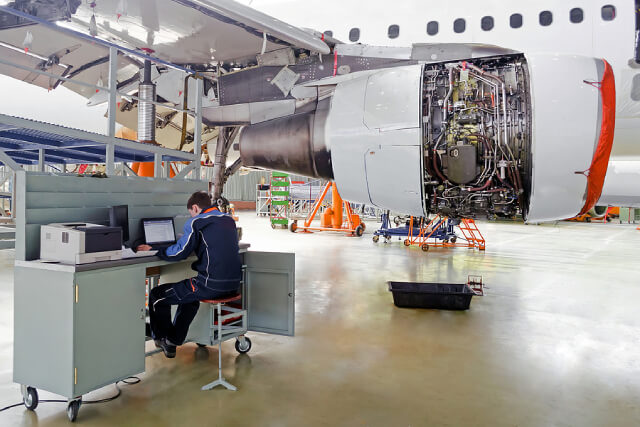The Vital Impact Of RFID Technology On Aerospace Operations

Since its development, RFID technology has been implemented widely in most industries and sectors around the world. One major beneficiary of this technology is the aerospace industry – it has experienced the true efficiency that RFID Technology can offer.
With the use of RFID tags, both airlines and aerospace manufacturers receive real-time visibility regarding the status of production and repairs, even to the exact location of vital assets. In other words, aerospace RFID has allowed businesses to enhance the efficiency and efficacy of their procedures and operations, essentially improving the overall bottom line.
Read on to find out how RFID technology has pushed the aerospace industry to grow.
Management of tools
The aviation sector is a fast-moving industry with numerous variables to its challenges. It is easy to lose track of tools without the right technology on hand for tracing those variables.
For example, during the assembly of an aircraft, or even regular maintenance, precision and meticulousness are critical. A slight error or omission of a simple step or process could be fatal. In fact, a significant proportion of air accidents are due to negligence and human errors.
To fight against common issues like foreign object damage (FOD), it is crucial to ensure that all of the parts of the airplane are where they are supposed to be. By using RFID tags on all of the parts and tools, human errors is significantly reduced, as the RFID asset tracking system allows for a special identification of each tool and parts of the aircraft.
It can even detect tools from a remote distance and identify where or when or who have used them. Some of the most important tools in the aerospace niche include pneumatic tools, torque tools and hand tools. Hence, the creation of special RFID cabinets for better accountability of tools is vital in the aerospace industry.
Aircraft cabin management and control
RFID helps in controlling the access to key areas of the aircraft. It is a known fact that not everyone can go everywhere in an aeroplane; especially when the aeroplane has taken flight and is heading towards the next destination.
For instance, the cockpit is only reserved for a few members of the cabin team, including the pilots. Therefore, an effective way to control access to the cockpit is by using the RFID tags with a reader in place to limit who is granted access.
In addition, RFID helps to ensure the security of those inside the plane. For example, aviation regulations state that aeroplanes must have inventory checks for crucial items such as oxygen bottles and life jackets. RFID technology helps to perform such inventory checks in real-time, to ensure that everything is on board without any chance of errors or missing out on an item.
Typically, manual inventory checks using human labour alone can take anywhere between two to three hours. On the flip side, by using RFID, this can take as little as a few minutes.
Staff attendance
Another vital area of aircraft discipline and operations is the attendance of the staff. RFID can help airport management know who has reported to work, and who is absent.
In addition, it can facilitate to highlight when certain personnel is needed in an area urgently. One common example would be when handling repairs on the airplane, different parts of the plane require the expertise of distinct specialists. When an emergency occurs, every minute is critical to minimise the possible damage to equipment or cause any harm to the staff or those within the area.
RFID can assist to identify whose area of specialty that is, and notify them in real-time.
With RFID technology, aerospace operations have improved tremendously – whether in regards to aircraft repairs or employee welfare.